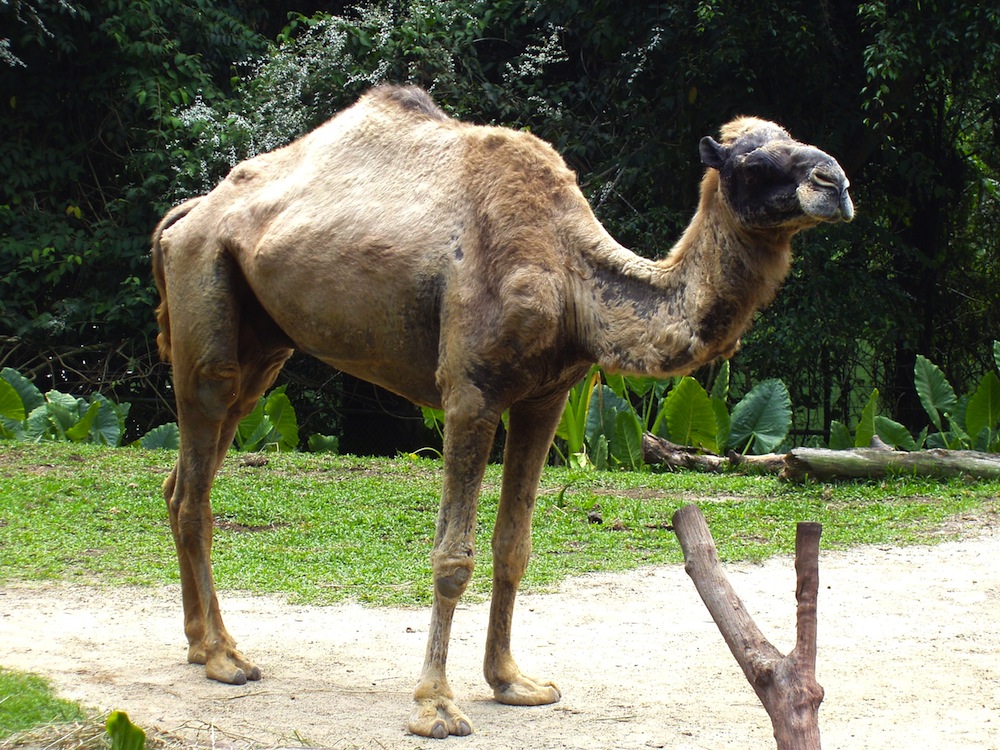Greenhouse Gas Pains: Shoot the Farting Camels?

Australian officials are hoping to curb carbon emissions by killing off feral camels in the outback, but U.S. researchers say the cows are the country's main carbon-emitting animals, and lowering the camel population isn't enough.
Northwest Carbon, a commercial company, suggested awarding carbon credits to individuals and companies in return for killing feral camels as a part of a larger carbon-curbing legislation called the "Carbon Farming Initiative," released today (June 9) and submitted to the Australian parliament's Department of Climate Change and Energy Efficiency.
The officials figure removing the feral camels, which toot and burp out carbon, would lead to a significant reduction of greenhouse gas emissions.
Northwest Carbon proposed shooting the animals from helicopters or rounding them up and sending them to a slaughterhouse to be used in pet and human foods. In return for killing the camels, they would receive carbon credits, which can be sold to companies to give them leeway in the amount of carbon they emit in other ways, like manufacturing. [Read: Top 10 Craziest Environmental Ideas]
A camel conundrum
Early settlers introduced the camels into Australia in the 19th century; they were used for transportation until cars and trucks took over. When they were no longer needed they were released into the wild, where they have no natural predators to curb their population, which doubles every nine years.
Camels release methane, a potent greenhouse gas — one that absorbs and emits radiation from the sun, warming the Earth — that is about 21 times stronger than carbon dioxide, though it stays in the atmosphere for much shorter stints compared with carbon dioxide. The methane comes from their digestive system, where they break down carbohydrates like starch using microorganisms in their multiple stomachs.
Get the world’s most fascinating discoveries delivered straight to your inbox.
The breaking-down process makes the carbohydrates digestible but releases methane in the animals' burps and flatulence. The same thing happens in other animals that rely on a similar digestive process, like cows and sheep.
Mounting methane
Each camel releases about 100 pounds (46 kilograms) of methane per year, though it varies with the camel's age, size and diet. This is the warming equivalent of about 2,500 pounds (1,150 kilograms) of carbon dioxide released into the atmosphere per year per camel, according to the International Panel for Climate Change (IPCC). That's about one-fourth the emissions an average American car releases every year.
In comparison, cows release around 220 pounds (100 kg) of methane a year, according to the U.S. Environmental Protection Agency.
"Australia has about 20 million beef cattle and probably around 1.6 million dairy cows. So, 1.2 million camels is about 5 percent and can make a dent in the GHG [greenhouse gas] emissions, but I doubt it is going to be anything significant," Alexander Hristov, of Pennsylvania State University, said in an email to LiveScience.
Not only do the camels release greenhouse gasses, but they also destroy farmland and property as they roam the outback and compete with livestock for food and water. In 2009, a caravan 6,000 strong ravaged the outback town of Docker River looking for water. These and other economic reasons might be the true reason to decrease their numbers, Hristov said.
You can follow LiveScience staff writer Jennifer Welsh on Twitter @microbelover. Follow LiveScience for the latest in science news and discoveries on Twitter @livescience and on Facebook.
Jennifer Welsh is a Connecticut-based science writer and editor and a regular contributor to Live Science. She also has several years of bench work in cancer research and anti-viral drug discovery under her belt. She has previously written for Science News, VerywellHealth, The Scientist, Discover Magazine, WIRED Science, and Business Insider.

